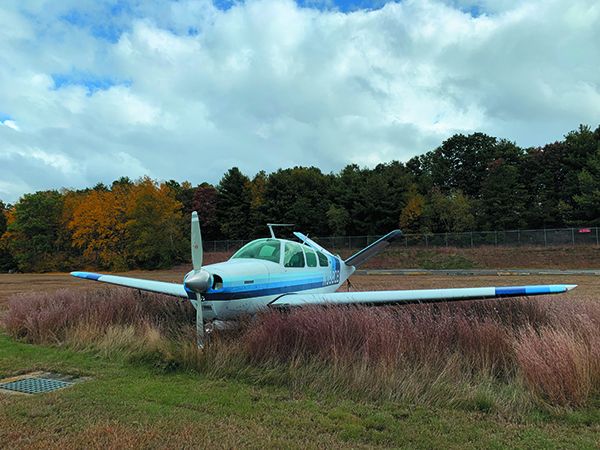There is a noticeable spike in used aircraft prices, and nobody can really offer an explanation why, other than it being a COVID-19 thing. Whatever is driving the feeding frenzy, things have never been good for sellers, but if you’re a buyer financing a purchase, the appraisal process may be falling short, which could cost you more money in the long run.
To find out what’s going on we reached out to Mike Simmons, our go-to veteran aircraft evaluator and himself an aircraft owner. As he points out, there’s a right and wrong way to appraise an aircraft. Herewith is his current report.
NEW ORGANIZATION
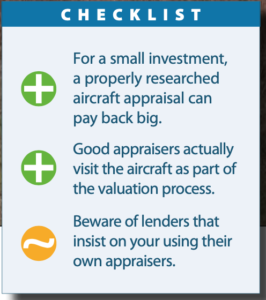
When I wrote about appraisals in Aviation Consumer magazine back in 2016, I talked about the NAAA (National Aircraft Appraisers Association) and its benefit to the appraisal industry. But in 2018 the NAAA ceased operations, and it’s why the valuation tool in Trade-A-Plane disappeared, although some appraisers continue to use their NAAA credentials—a red flag.
It became clear in late 2018 that a new aircraft appraisal organization was needed to fill the gap being left by the previous organization. The result was the establishment of the Professional Aircraft Appraisal Organization (PAAO), formed by nine highly experienced aircraft appraisers. Most from the previous organization decided to transition to the PAAO and were welcomed. These individuals created the PAAO’s base of experienced, trained professional aircraft appraisers and most of them remain with the organization today. Still, others were unable to meet the basic criteria of the new organization and were rejected in our review process.
The core concept of the PAAO mission statement was to “maintain public trust” and this attribute is paramount in just about everything we do. It will also be a recurring point in this article. Because we were starting fresh, we identified the key items that were effective from the previous organization, such as a code of ethical behavior and field visits for all signed aircraft appraisal reports. We then included other items such as criminal background checks—which no other appraisal organization, let alone an aircraft appraisal organization, performs.
We published a list of best practices for aircraft appraisers, which any aircraft appraiser is welcome to adopt. New applicants are required to meet certain criteria before they are allowed into the organization and most importantly, we developed a training program that teaches individuals how to appraise aircraft responsibly so that they provide clients with a credible, reliable and believable report, thereby maintaining public trust. Most important, I think, is that we have a mentoring program so that new appraisers have someone to work with initially to help them with questions and problems as they come up.
All PAAO appraisers in good standing may be found by using the Professional Aircraft Appraiser Finder at www.appraiseaplane.biz and registering for access. Your information is not shared with anyone and it’s kept secure.
Another challenge was the development of a new software tool to assist in calculating values and developing our reports. The basic modeling concept from the previous organization was a good one in that key value points were assessed separately and somewhat independently of each other. The results were then tabulated to assist in forming a final opinion of value, and the decision was made to continue with this concept.
This description is a little over-simplistic as the calculations vary based on the type of aircraft along with other factors, and the tool itself is far more than a simple calculator. We also faced the challenge of building a database of aircraft and component values. Here, we hired a statistician who also has a background in aviation to assist in analyzing market data.
I can state with a reasonable degree of certainty that the PAAO collects and analyzes more data in a single week than the previous organization or publications do in a single quarter.
The software tool from the previous organization was also quite rigid in several areas and we decided to remove those restrictions, thereby allowing PAAO aircraft appraisers to use their own judgment in developing reports.
The result of this effort is a professional aircraft appraisal organization that brings in qualified individuals and instructs them in techniques specific to our methodology and analysis to promote and maintain the public trust.
Once these individuals receive their Certificate of Appointment, they are free to offer their services to the general public in accordance with our ethical guidelines.
THE CURRENT MARKET

A number of sources agree that market activity was heating up in late 2020 and early 2021. Reports from several banks and title companies indicated that 2020 began somewhat slow, but later in the year painted a picture of challenging times (due to the volume of transactions) to meet the end of the year closings. 2021 does not appear to have brought any relief yet, although some charts do show a slight decrease in activity. Reasons for this activity vary from low interest rates on aircraft loans to COVID-19-related uncertainty, plus concerns over upcoming tax policy changes. COVID-19 lockdowns in early 2020 forced a number of aircraft manufacturing facilities to shut down or restrict output and as the demand for private aircraft increased during 2020, buyers turned to the used market for a solution.
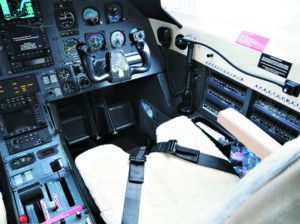
As a result, many of the good used aircraft have already been purchased. In general, what remains requires additional scrutiny before any money changes hands and this effort requires more than a good prebuy inspection. Several in the banking environment also highlight that the customers for upper-end aircraft were changing from businesses to high-net-worth individuals who were realizing the benefits of coming and going on their schedules—versus dealing with hassles and health risks of airline travel.
However, one analyst suggests a few clouds are on the horizon as these same high-net-worth individuals are also realizing that the cost of operation for these higher-end aircraft is more than they bargained for. As we come out of the pandemic, we may see a number of these aircraft coming back on the market.
Based on the analysis I am seeing month over month, there has been a steady increase in pricing. I am reluctant to put a specific number on this increase because the analysis is very broad in scope and your specific year, make and model will be different. What is critically important at this time is that you do not overpay for any aircraft based on its attributes and the current market—and this is quite easy to do when the market is as active as it is presently. Taking time to make an informed business decision may result in someone buying an aircraft out from under you (at a premium price, no less) before you can even call the broker/dealer/owner. My thought is to let that be their mistake. It does not have to be yours.
PUBLIC TRUST
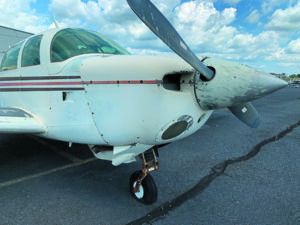
In situations where prices are increasing or decreasing quickly, and the market is limited with good candidate aircraft, most individuals who are in the market (buying or selling) need comprehensive, current information to make informed business decisions and avoid panic buying/selling or knee-jerk decisions—and hoping they are the right decisions. This is also a point where “maintaining public trust” become critically important, as the aircraft appraisal industry is unregulated—meaning that anyone can provide an aircraft appraisal—and therein lies part of the problem. Knowing what to ask for, who to trust and more importantly who not to trust is critical in these situations.
My previous article highlighted the need for an experienced, trained professional to assist in understanding what you are buying (or selling) and what the market value of the aircraft is believed to be at a given point in time. Unfortunately, there is quite a bit of misinformation and misdirection to confuse and complicate what should be a pretty straightforward analysis.
One technique is to use a variety of phrases in the marketplace to confuse or complicate matters, including terms such as “desktop appraisal,” “on-site appraisal,” “USPAP appraisal” and “publication X analysis.” What is the difference and why does it matter because each provides a number in the end, right? Isn’t one number as good as any other ? Well, it does matter if the objective is to better understand critical details that went into that opinion. Instead of analyzing each of these terms in detail, here is what you need to know and understand.
Comprehend what an appraisal actually is. I routinely see comments or questions about accuracy or “accurate numbers” and it is important to realize that an appraisal by definition is an opinion. Opinions are neither accurate nor inaccurate. They are either supported by factual information or something less so. As a result, the words “accurate” and “appraisal” should never be used together.
Consider that what clients are purchasing (or should be purchasing) is an appraisal report, which contains that opinion as part of its conclusion. The report will provide the supporting information, and the report should be easy enough to read and understand for the typical layperson.
WHAT’S IN A REPORT?
Insofar as the various reports and reporting methods go, make sure that the appraiser is going to look at the aircraft and review the aircraft’s records. What clients should expect is a report that details what the appraiser saw, the condition of the item in question, photos—especially if they clarify the condition of the item—and a page of calculations leading to the final opinion of value. This type of approach promotes credibility, reliability and helps maintain public trust.
Some of the reports that come across my desk from others outside of the PAAO fall into two basic categories. They are extremely “thin” and contain only one or two pages of calculations with no context. Or, they are what we call extremely “thick.” These reports might contain quite a bit of fluff information that anyone can find about a given year/make/model, and very little detail about the aircraft in question.
There may be several pages of comparison aircraft and calculations, but very little dialog about how the appraiser came to his or her final opinion of value, or their overall opinion and observation of the subject aircraft and how it fits into the current market and why. One reason that analysis may be missing is because the evaluator never left the office to obtain the needed details to develop that information. The so-called fluff and the barrage of calculations could be more of an attempt to hide the missing details, rather than provide meaningful information.
The pushback that you are likely to get from many in this industry involves comments such as “on-site appraisals are too expensive and invasive” or “desktop reports are just as accurate” or “on-site reports take too long to write.” As with most comments and criticism, there is a grain of truth in all of these comments. For example, one pricing strategy I have seen publicly advertises the price for an on-site appraisal in the nosebleed section while the desktop report is priced much lower—albeit high for a desktop report. However, prices vary for on-site appraisals. My advice would be to shop around and get the pricing from other professional aircraft appraisers to compare and contrast. However, I am not sure why some see the on-site report as invasive. There may be some confusion with a prebuy inspection, which is a very different activity, but there is nothing invasive about looking at the exterior and interior of the subject aircraft or digging deep in its maintenance and flight records. There is another term for this level of effort and that is due diligence.
It’s worth mentioning that no inspection panels or cowlings should be opened or removed by the appraiser. So the question here is, what action maintains public trust? It is not unusual for any client to ask how long it will take to complete a report. In the best-case situation, a field visit will take several hours to complete. Depending on the volume of records and type of aircraft, the field visit could take longer. The report itself (along with the related research) easily takes another day or so.
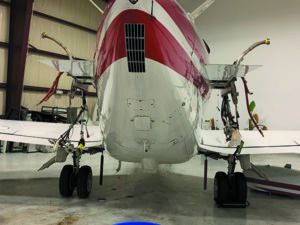
Travel to and from the aircraft’s location is factored in as well, so the effort can take anywhere from two days to as much as 10 days depending on the complexity of the aircraft and its records. But let us compare this to those evaluators who claim to write, on average, one report a day—or more.
Quick? Yes. But what are they missing in the process? It might be the critical details needed to provide a credible, reliable opinion of value. In my estimation, a “quick” analysis does not maintain public trust.
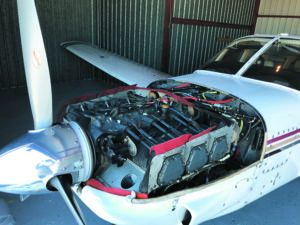
WHO NEEDS AN APPRAISAL?
It is common for those of us in aviation to gloss over or avoid the need to have an aircraft professionally appraised. Generally, we are A-type personalities and believe we can do it ourselves, but very few even take the time to read and understand what is in the aircraft’s maintenance records. Sometimes there is an overall loss of public trust from others in the aircraft appraisal industry who did not have the knowledge, skills and abilities or any training in the area. Usually this comes from hiring the lowest bidder that can be found. However, finding and developing a relationship with a trained professional aircraft appraiser can provide insights that you may have never considered.
For basic singles and piston twins, a thorough appraisal by someone who knows what they are looking at is a small price to pay compared to the asking price of the aircraft. Some are billed at under $500, not including travel. More complex aircraft including turbines can be significantly more, for obvious reasons.
Most of us spend hours or days poring over ads and specs to find a good candidate aircraft. Should we not at least hire someone who is going to perform the necessary research to validate our findings and provide insight into the aircraft’s market value? Unfortunately, that doesn’t always happen.
Contributor Mike Simmons has over 30 years of experience as a professional aircraft appraiser, and he’s a Cessna Cardinal owner based in North Carolina.

